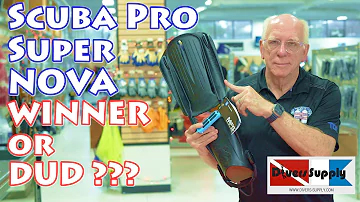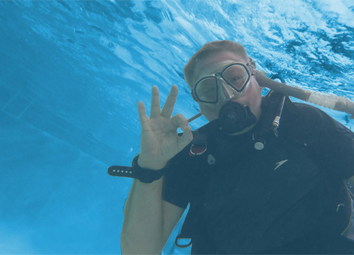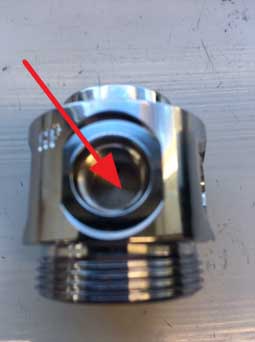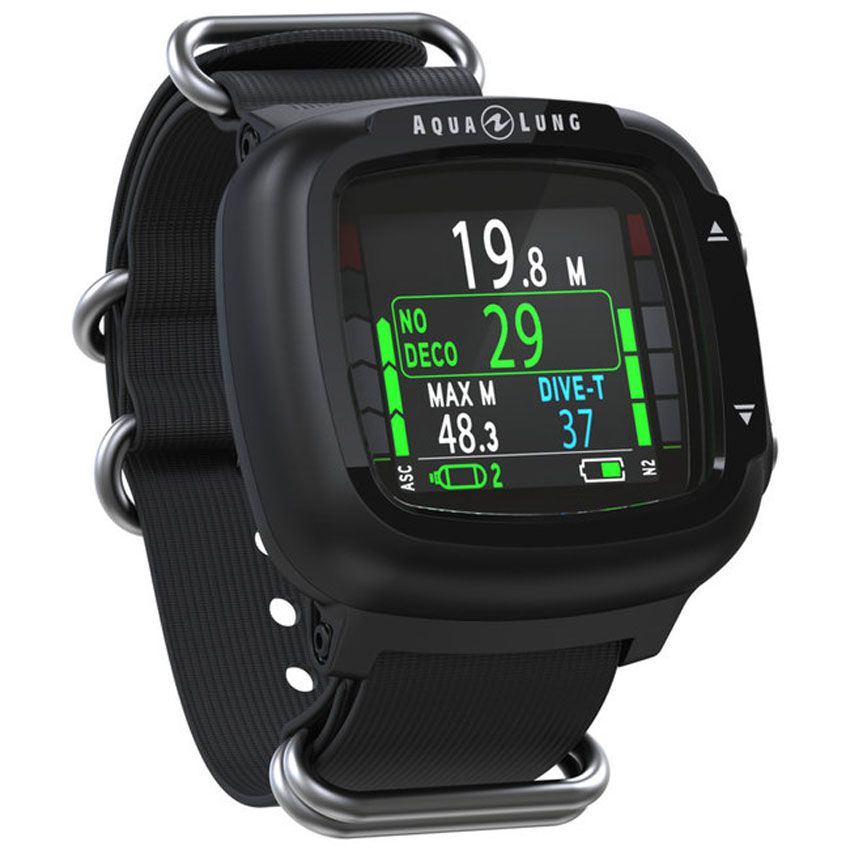We use cookies to enhance your experience on our website. By clicking “I Agree,” you consent to our use of cookies in accordance with our Privacy Policy. If you choose not to allow cookies on our website, some of the website’s functions may not be available to you. Learn more.
A snorkel is a personal piece of equipment that for a diver usually hangs on your mask and when used spends time in your mouth, and lets you breath at the surface.
Because you put the snorkel in your mouth most people will want to own their own. Your Scuba Snorkel is a mandatory piece of equipment when you are learning to Scuba Dive. During training your wear it on the left side of your mask because your regulator comes from your right side. There are 3 variations to choose from on the market, they are the Traditional J tube, Semi-dry and Dry Snorkel.
 The Traditional "J" Tube Snorkel
The Traditional "J" Tube Snorkel
This is the one thats been around for decades and has not changed too much from its original design. Very dependable and not much that can go wrong with this type. The Snorkel is constructed to have low drag and are open at the top and allow water to completely flood the snorkel. When surfacing a blast of air to the snorkel is required to clear the snorkel once reaching the surface. This type of Snorkel is very popular with freedivers and spearfisherman who are comfortable snorkeling and want the low drag this provides. Also some manufacturers make the traditional snorkel that will roll up to stow away easily in a pocket when not in use.
The Semi-Dry snorkel is a mix between the Traditional snorkel and a Dry Snorkel. While the Semi-Dry snorkel does not keep all the water out, it does a good jop of keep tyhe tube clear when water or a wave comes over the top. A Semi- Dry has a cover designed to deflect water on the surface, and a purge valve at the bottom to allow the small amout of water to drain past the breathing tube, but will still flood if the diver chooses to submerge. Semi-dry snorkels seem to work best for scuba divers who want to save precious air in their tank while on the surface but don't want to deal with the bulkiness of a dry snorkel.
Made popular in the 1990's the Dry Snorkel started out as a clunky design but over the years has evolved to a streamline snorkel as seen today. A dry snorkel is simply a snorkel that has a mechanism on the top that prevents water from entering the snorkel as the snorkeler dives underwater. The valve is usually a floatation device that floats upwards to shut the air pathway. When the snorkeler returns to the surface, the floatation bob then falls back down allowing the snorkeler to start breathing again. The dry snorkel works great for the snorkeler who just wants to float around the surface and take quick shallow dives and not have to worry about purging water out of the snorkel. While dry snorkels prevent water from entering into the tube it also causes the snorkel to be buoyant because of the trapped air. This is undesirable to snorkelers who are looking to dive down to greater depths such as freedivers.
Clearing a Flooded Snorkel
Blast Clearing
The snorkeler expels water from the snorkel either with a sharp exhalation on return to the surface.
Displacement method
Tilting the head back shortly before reaching the surface and exhaling until reaching or breaking the surface. and facing forward or down again before inhaling the next breath. The displacement method expels water by filling the snorkel with air; it is a technique that takes practice but clears the snorkel with less effort, but only works when surfacing. Clearing splash water while at the surface requires blast clearing
When you are ready to purchase
When selecting a snorkel, a diver must try to understand each snorkel type and make the best decision about what design he or she likes best. Learn how to connect the snorkel to your mask when selecting a snorkel and make sure it includes the connector. If flooding does not matter, a tube or semi-dry snorkel may be best. If the diver likes the idea of storing a snorkel easily, the roll-up snorkel may be perfect. Finally, if flooding is a problem or causes discomfort, a dry snorkel will be the best option. Make sure you choose a snorkel that the mouthpiece fits you not too big or small.













